How does the research enterprise at Culverhouse make a difference?
It helps improve our world. Culverhouse is developing a reputation as a business school that addresses real social problems with research. This year, through published research, our faculty have tackled issues like the nursing shortage, gender bias in commercial real estate, and work/life balance during COVID-19, among many other topics.
It makes partnerships possible. Culverhouse’s Institute of Data and Analytics forms the foundation for the new Southeast Regional Drug Data Research Center, a regional center to help communities across the Southeast combat the opioid crisis. The center builds on research conducted within IDA, and is supported by $3.5 million in federal funding.
It improves teaching. Because a business school should be a place where cutting-edge research and real-world experience meet to give students an unmatched educational experience, our faculty are both scholars and teachers. For instance, Dr. Burcu Keskin, professor of operations management at Culverhouse, won the INFORMS 2022 Prize for Teaching of the OR/MS Practice. Her teaching approach was described by students as, “inspirational, empowering, and providing superior mentorship.”
It raises Culverhouse’s national profile. Our most exciting news this year is that for the first time, we are now ranked on the UT Dallas Naveen Jindal School of Management B-School Research Productivity Ranking list, ranking #96 in North America, and #88 in the United States. Culverhouse is the only business school in Alabama to be ranked in this prestigious list, and it moves us toward our ultimate goal: to be recognized as a world-class business college.
And these are just some of the highlights. Our college has so much more to celebrate, including record-setting student enrollment, substantial forward leaps in rankings, and successful fundraising as part of the $1.5B Rising Tide Capital Campaign for The University of Alabama.
As always, please contact me or our associate dean for faculty and research, Dr. Jim Cochran, at rad@culverhouse.ua.edu, for ways to get connected or involved with what we do.
Thanks, and Roll Tide!

Kay M. Palan, PhD
Dean of the Culverhouse College of Business
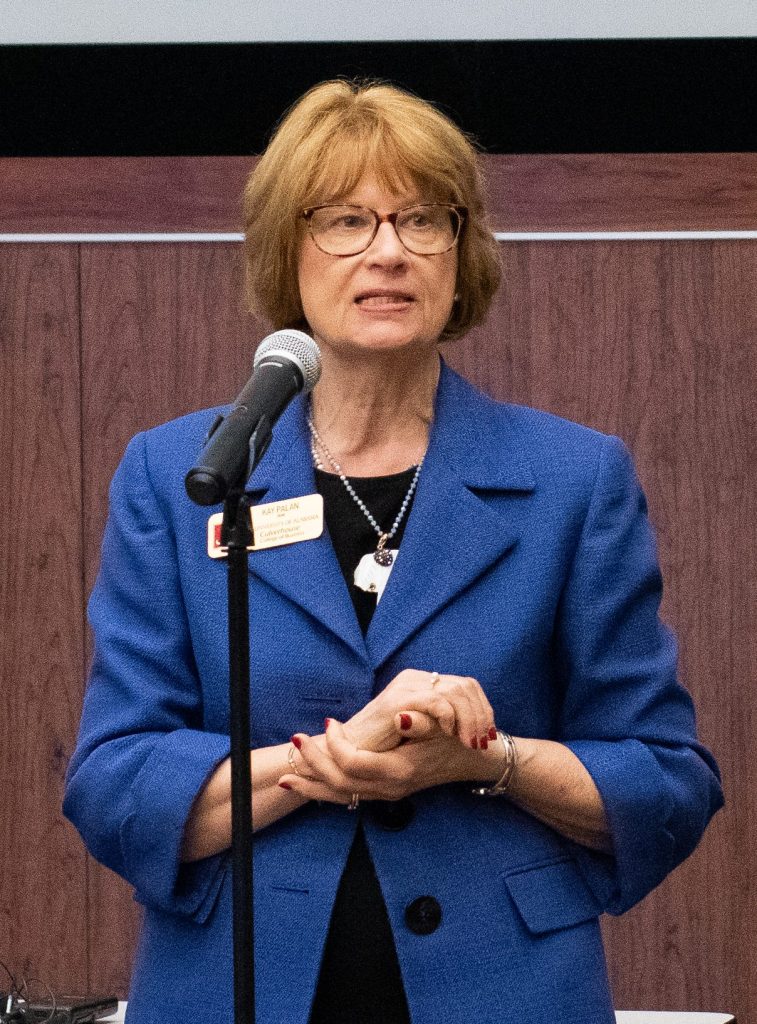
Combating the Opioid Crisis
With expertise and experience in multidisciplinary data analytics, The University of Alabama was tapped to spearhead a regional center to help communities across the Southeast combat the opioid crisis.
The Southeast Regional Drug Data Research Center is supported with $3.5 million in funding from the United States Department of Justice’s Bureau of Justice Assistance. The center builds upon efforts at the Institute of Data and Analytics, or IDA, within the Culverhouse College of Business in developing Alabama’s opioid central data repository, expanding to seven other states across the Southeast.
“A challenge that state and federal agencies face is the organization and consolidation of data sources,” said Dr. Jason Parton, IDA director and associate professor of statistics. “This regional center will create a hub that develops digital tools and data sharing capabilities to support decisions by opioid crisis stakeholders in fields like public health, public safety, and law enforcement.”
Researchers with the IDA will develop a central repository and provide intelligence drawn from opioid data to assist with drug misuse in the region. The goal is to increase the effectiveness and efficiency of government agencies, law enforcement, nonprofit organizations, public leaders and the scientific community.
“The Regional Drug Data Research Center will serve as a replicable model for multidisciplinary research efforts to advance knowledge on drug misuse and abuse in America, to reduce fatal and nonfatal overdoses, promote public safety, and support prevention, harm reduction, treatment, and recovery services,” Parton said.
The nation’s opioid crisis continues to cause substantial issues for people and communities. Organizations active in abating the crisis, however, often find it difficult to find reliable data, comprehensive analysis, and actionable insights because of a lack of shared information and potential bias or oversimplification in reporting scholarly research by media, lobbyists or on social media.
“These challenges constrain the ability to develop effective drug policies,” Parton said.
Like the Alabama Central Data Repository, the new regional center will collect data from state government agencies that include law enforcement and public health for information pertaining to arrests involving opioid use, demographics, and medical and traffic data, to name a few.
The regional aspect will allow for the consolidation of data while providing web-based, real-time, multisector data dissemination across multiple agencies and across state lines. The center will issue reports and coordinate an annual meeting for stakeholders interested in drug-related data findings and analytic techniques.

“The illicit drug environment in a neighboring state can affect the drug-related activities of a state’s constituents,” said Dr. Matthew Hudnall, IDA deputy director and assistant professor of management information systems who leads the Alabama opioid project.
At UA, the regional center expands opportunities for students to participate in the experiential learning and real-world training of the IDA, enhancing skills in collecting, organizing, managing, securing, analyzing and communicating data analysis.
Along with Alabama, other states included are Florida, Georgia, Kentucky, Mississippi, North Carolina, South Carolina, and Tennessee.
Along with Parton and Hudnall, other Culverhouse faculty involved with the project include Dr. Dwight Lewis, IDA associate director and assistant professor of management, and Dr. James J. Cochran, professor of applied statistics and Culverhouse associate dean for faculty and research.
Cybersecurity camp students attack simulated virtual threats

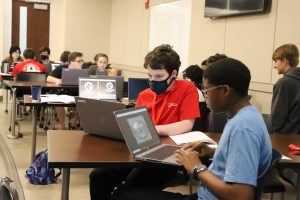
Dr. Greg Bott started his first round of the Marillyn A. Hewson Cybersecurity Summer Camp last June at 8 a.m. each day for two reasons. First, it left students the afternoon to pursue their own interests. But second, and possibly more importantly, he wanted it to feel like a commitment, because it was. “The kids who are dedicated will show up,” Bott stated. “Your STEM kids, your top performers.”
Bott shares the Marillyn Hewson Endowed Professor in Cyber Security professorship with colleague Dr. Allen Johnston, who also helped with the camp that bears the name of the Culverhouse alum whose gifts made it all possible.
Additionally, they were joined by Dr. Matthew Hudnall, deputy director of the Institute of Data and Analytics, and Dr. Yi Ting Chua from the Department of Criminology & Criminal Justice.
The camp ran for two weeks in June, with the second week being more advanced instruction. Both weeks, the students spent the first four mornings learning about the Linux and Windows operating systems, and on Fridays, they competed in the U.S. Air Force’s Cyberpatriot competition. In the competition, students are given virtual machines (pieces of software that emulate physical computers)
loaded with security vulnerabilities. Students are scored based on how many of these vulnerabilities they can find and close.
The camp is geared toward high school students, but some campers were as young as seventh grade. Bott, who has a background in summer camps, reflected, “I was really surprised at how dedicated the kids were. They were really motivated.” He went on, “How amazing is it if you are an eighth grader and you find something you have a passion for?”
Solving Problems, Building Community
UA Innovate hosted The University of Alabama’s first female-led hackathon and innovation challenge over the weekend of April 2-3. During the 24-hour event, student teams strategized technology-based solutions addressing various scenarios in the cybersecurity, social impact, data analytics and prototype
innovation spaces and competed for a chance to win $1,000. Throughout the challenge, students attended workshops, brain breaks, and mentorship sessions with representatives from the corporate sponsors of the event.
Over 250 participants spanning 27 different majors across five UA colleges and seven universities throughout the southeast participated in the inaugural event. Eleven women made up the leadership team, six of which are Marillyn Hewson Cyber Security Scholarship recipients. The event was made possible by the generosity of 13 corporate sponsors.
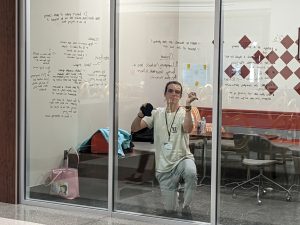

UA Innovate Hackathon and Innovation Challenge Winners
Consulting
First Place: Luke Kreutzer, Nick Doyle, Andrew Ravine, and Jack Tereck
*Sponsored by Accenture
Data analytics
First Place: Bethany Welty, Asit Singh, and Kaitlyn Shelver
*Sponsored by IBM
Social Impact
First Place: Guadalupe Moncivais, Chase Buford, Jalen Butler, and Rachele Kern
*Sponsored by International Paper
Cybersecurity
First Place: Benjamin Fitzpatrick and Sahuj Mehta
*Sponsored by Walmart InfoSec
Full-Stack Development
First Place: Ben Reeves, Joseph May, and Sam Ward
*Sponsored by Capgemini
Prototype Innovation
First Place: Kate Sanborn
*Sponsored by Microsoft Azure
People vs. Sales
When a firm goes public, which matters more for firm value: people or sales? In “How Does Your Garden Grow? The Interface of Employee and Sales Growth Post IPO,” published in Strategic Entrepreneurship Journal, Culverhouse’s Dr. Theresa Welbourne, along with coauthors Varkey Titus, Jr. and Jenna R. Pieper, both at the University of Nebraska-Lincoln, and Indiana University’s Matthew Josefy, surveyed a sample of 1,181 firms between 1996 and 2006 to understand the relationship between sales growth and employee growth, and how this relationship affects firm value in post-IPO companies. The authors considered three patterns of growth: congruent (employee growth and sales growth roughly match), employee-dominant (employee growth exceeds sales growth), and sales-dominant (sales growth exceeds employee growth).
Though common sense might suggest that a congruent pattern wherein employee growth matches sales growth would be most strongly related to firm value, the authors surprisingly found that an employee-dominant pattern of growth is most strongly associated with firm value post-IPO. This suggests that post-IPO, when critical decisions are being made about resource allocation, managers should ensure that infrastructure–which requires sufficient manpower– keeps pace with sales. Otherwise, the result may be employee overwhelm or burnout, which is ultimately detrimental to profit.
The authors also argue that for firms with high research and development expenditures, this employee-dominant pattern provides the necessary workforce to flexibly respond to innovation. This principle holds true in highly dynamic or frequently changing industries: An investment in people outweighs the cost, because it gives firms flexibility to meet new challenges.

Professor of Management
Will and Maggie Brooke Endowed Professorship in Entrepreneurship
Executive Director of the Alabama Entrepreneurship Institute
COVID-19 and Work-Life Balance
Russell Matthews co-authors award-winning article examining the effect of the coronavirus pandemic on employee work-life balance and offers recommendations for future crises.


Professor of Management
John Miller Professor of Management
The Fellows Group of the Academy of Management recognizes and honors members who have “made significant contributions to the science and practice of management.”
Last year in 2021, the Fellows, combined with the Community for Responsible Research in Business and Management, sponsored the Responsible Research in Management Award, that “recognizes and celebrates recent research that benefits society by producing credible and useful knowledge.”
A paper co-authored by Dr. Russell Matthews, Culverhouse’s John Miller Professor of Management, “Changes to the Work-Family Interface During the COVID-19 Pandemic: Examining Predictors and Implications Using Latent Transition Analysis,” in the Journal of Applied Psychology, was a recipient of this award.
Co-authors of the paper include Hoda Vaziri of the University of North Texas, Wendy Casper of the University of Texas at Arlington, and Julie Wayne of Wake Forest University.
As is suggested by the title, the authors explore the complicated dynamics within the family/work-life context wrought by the coronavirus pandemic. Specifically, the authors “examine how the pandemic has affected the intersection of work and family for employees, how that affects their attitudes at work, and what organizations can do to ensure better employee well-being and functioning
during such societal crises.”
The authors utilized a sample of employees surveyed both before and during the early stages of the pandemic and found that the respondents experienced a mix of positive and negative changes to their perception of work-life balance. Negative changes were associated with adverse changes to their status as employees, such as lessened job satisfaction and performance. The authors also provided a set of best practices that employers could use during future crises to address work-life balance issues like training, encouraging supervisors to behave compassionately toward their employees, and implementing remote work technologies and practices.
* Vaziri, H., Casper, W.J., Wayne, J.H., Matthews, R.A. (2020). Changes to the Work-Family Interface During the COVID-19 Pandemic: Examining Predictors and Implications Using Latent Transition Analysis. Journal of Applied Psychology, 105(10), 1073-1087. DOI: 10.1037/apl0000819
The Nursing Shortage Solved By...Greater Cooperation?
The nursing shortage is an ongoing crisis, made worse by the COVID-19 pandemic. Existing nurses are getting older, fewer new nurses are entering the field, and patients are living longer, which means they need more care. In an article for a special issue on nursing for the Journal of Managerial Psychology, Culverhouse’s Dr. Peter D. Harms and former Alabama student Dr. Graham H. Lowman—
now at Kennesaw State University—argue that there is a need to harmonize and integrate research across the business and nursing disciplines in order to better address the nursing shortage. The authors observe that even when researchers are studying the same issue (the ongoing shortage of nurses), scholarship in the fields of organizational behavior, human resource management, and nursing often stays siloed in its own field—indebted to its own research methods, written in its own jargon— and generally ignores research from the other fields.
To address this, the researchers proposed an integration framework for outlining a series of related issues that contribute to the ongoing shortage, cascading from one to the other. A reduced workforce pipeline leads to a personnel shortage, which in turn leads to organizational concessions, followed by a poor work environment for nurses. This poor environment leads to negative work experiences, which cause burnout and turnover, further reducing the workforce and beginning the cycle anew.
Within each specific issue, the authors identify key areas of needed research. For instance, they wonder, how do nurses perceive the profession before they enter it? Or how do nurses evaluate the opportunity cost when they are deciding whether to pursue full-time or travel nursing? By positioning studies within their framework, the authors argue, researchers in all three fields can have productive cross-disciplinary conversations that point toward effective applied solutions.


Professor of Management
Frank Schultz Professor
A Lottery for Savers
“A low savings rate has long been a concern among economists,” writes Associate Professor of Economics Dr. Paan Jindapon, in his article “Prize-Linked Savings Games: Theory and Experiment,” published in Games and Economic Behavior. To address this issue, Jindapon, along with collaborators Drs. Pacharasut Sujarittanonta (Chulalongkorn University, Thailand) and Ajalavat Viriyavipart (American University of Sharjah, United Arab Emirates), test an innovative method of encouraging savings: Prize-Linked Savings (PLS) accounts. These accounts, which “bundle a lottery with savings,” issue savers a virtual lottery ticket for every deposit of a certain amount, with larger savings amounts offering savers a greater chance of winning the prize. Though PLS products typically offer a lower interest rate than
other savings vehicles, they nonetheless promise security of principal regardless of the outcome of the lottery. So savers can be assured that even if they do not win big, they will not lose their savings.
In theory, the researchers proved that an equilibrium level of PLS savings uniquely exists (equilibrium level, in this case, is a state where each saver has no incentive to change their PLS decision given the PLS levels chosen by all other savers). To test the effectiveness of PLS accounts, the researchers designed an experiment. They recruited 160 undergraduate students at Chulalongkorn University in Thailand and awarded each an endowment of 300 Thai Baht (which is a daily minimum wage in Thailand, or around $9 US). In an experimental lab, each subject was asked to allocate their sum of money to immediate consumption, a 6-month savings account that pays a fixed interest rate, and a PLS account that pays a big prize to only one lucky saver, six months later. The more they saved in their PLS account, the more possibility of winning the big prize.
While the researchers are cautious about generalizing about the effect of PLS on total savings, the results of the experiment were positive, suggesting that on average, introducing PLS increases the total savings by 12.3%. Though PLS products are rarer in the US, they have been offered in countries such as Great Britain, Thailand, Japan, Germany, Spain, Mexico, and Argentina. In addition to further testing their findings, the authors suggest that future research might include investigating how to design and implement a PLS program for a given population and campaign budget.

Associate Professor of Economics
Harrison Schlesinger Endowed Faculty Fellow
Culverhouse Faculty Awarded Informs 2022 Prize

Dr. Burcu Keskin, a professor of operations management at Culverhouse, was INFORMS’ 2022 recipient of the organization’s Prize for the Teaching of OR/MS Practice.
The Prize for the Teaching of OR/MS Practice is awarded annually to an educator to recognize excellence in teaching the practice of operations research and management sciences, highlighting those who have succeeded in helping students acquire the knowledge and skills necessary to be effective practitioners of the field.
At the awards ceremony on October 16, Keskin expressed thanks to her doctoral advisors and mentors — and students — for helping her grow as a teacher, “I am grateful to former students for their feedback on my class materials and teaching style. I am grateful to my students for making every class exciting and rewarding and for keeping me on my toes even to this date!”
CULVERHOUSE MAKES UT DALLAS B-SCHOOL RESEARCH PRODUCTIVITY RANKING LIST
Among b-schools, one of the chief metrics of research productivity and quality is the protocol established by the University of Texas at Dallas’ Naveen Jindal School of Management. On a rolling basis, the school measures publications, including their authors and affiliations, in 24 leading business journals across major business disciplines.
The result is a ranked list of the top business schools by their contributions to research, with separate top 100 lists for the worldwide and North American business school communities, as well as a list of rankings by journal.
For the first time, the Culverhouse College of Business is on the list of the top 100 in North America, ranking #96. At 88th place in the United States, Culverhouse is also the only college in the state of Alabama to make the list.
Recognizing Undergraduate Research
Twenty-six undergraduate students and undergraduate student teams from the Culverhouse College of Business presented research they have been working on with their faculty mentors at The University of Alabama’s 2022 Undergraduate Research and Creative Activities (URCA) Conference. URCA 2022, held at the Bryant Conference Center on April 4, is UA’s event dedicated to showcasing research performed by its undergraduate students.
URCA 2022 attendees saw firsthand many examples of the outstanding contributions to research Culverhouse undergraduate students are making under the supervision of their faculty mentors. Several Culverhouse students received awards for their research. These students and their awards are:
Max Bergstrom: 1st Place (tie),
Business for SHARING Project: Food Rescue
(Faculty Advisor: Emmett Lodree)
Matthew Gaines: 1st Place (tie),
Business for Beyond Average Health: Higher Moments of the Health Production Function
(Faculty Advisor: Chris Whaley)
Sawyer Weed, Mason Mulnix, and Jamar Strother: 2nd Place,
Business for UA Experiential Learning Opportunities
(Faculty Advisor: Chapman Greer)
Erin Barksdale: 3rd Place (tie),
Business for Working Capital in the Local Service Sector
(Faculty Advisor: Craig Armstrong)
Ryan Griffin, Jay Johnson, Mike Heller, and Jack Underwood: 3rd Place,
Health Sciences for Effects of Statutory Nurse-to-Patient Staffing Requirements on Bed Availability, Access, and Cost
(Faculty Advisor: Thomas English)
John Winschel: 3rd Place,
Virtual Presentations for Accessibility of Airborne Infection Isolation Rooms for US
Health Facilities
(Faculty Advisor: Dwight Lewis)
Culverhouse faculty members Marilyn Whitman and Tom English received Outstanding Mentorship of Undergraduate Students in Research Awards at the 2022 Undergraduate Research & Creative Activities Conference Awards Luncheon on April 18.
Many of the Culverhouse students who presented research in URCA 2022 are also in the Culverhouse Faculty Scholars Program. This innovative program matches Culverhouse undergraduate students with faculty in the college who have similar research interests. Students who participate in this program serve as research apprentices to faculty mentors. The experience is tailored to the interests and backgrounds of the students and participating faculty members.
The Power of Data
The Culverhouse Business Analytics Symposium is an annual celebration of the decision-making powers of data. On Oct. 14, over 300 attendees attended the 2022 iteration of the Symposium to hear the following speakers discuss their organization’s approaches toward the use of data to effect strategic business outcomes:
- Bart Masters, Director, Data Science at Greenlight Financial Technology, Inc.
- Ryan Anderson, Data-led Transformation Leader and Managing Director, and Rubina Ohanian, Data Transformation Leader,
both at Accenture - Brian Lamkin, Senior VP of Business Intelligence and Integrated Solutions, and Margaret Mason, Lead Analyst, at Luckie and Co.
- Cameron Jagoe, CEO and Founder at ProcureVue
- Raja Chakarvorty, Chief Data Scientist at Protective Life Corporation
- Octavio Flores, Vice President, Data and Advanced Analytics at Nestlé USA
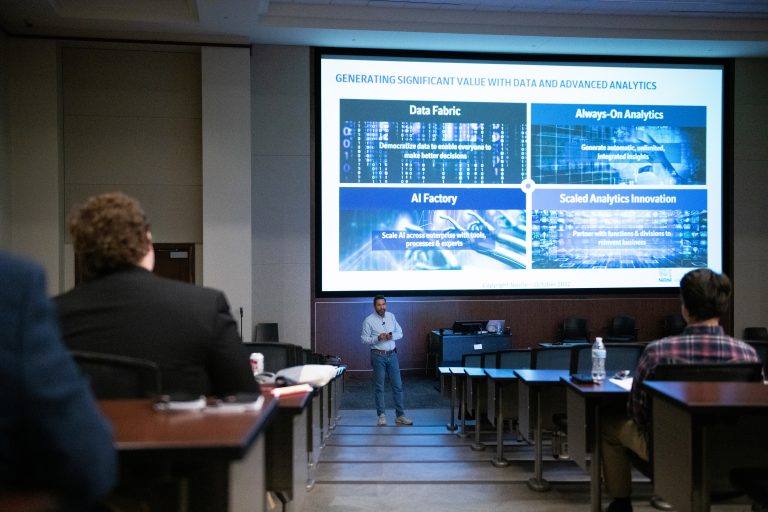
Research Points of Pride for 2021-2022
Selected Culverhouse Faculty Publications
Irwin, K., Gilstrap, D., Drnevich, P., and Sunny, M.
The Acquisition of Capabilities: How Firms Use Dynamic and Ordinary Capabilities to Manage Uncertainty
Journal of Management & Organization
Ichihashi, S. and Kim, B.C.
Addictive Platforms
Management Science
Lowman, G.H. and Harms, P.D.
Addressing the Nurse Workforce Crisis: A Call for Greater Integration of Organizational Behavior, Human Resource Management, and Nursing Literatures
Journal of Managerial Psychology
Chen, Y. and Huang, Y.
An Empirical Analysis of Software-as-a-Service (SaaS) Development Mode and Firm Performance
International Journal of Business, Humanities and Technology
He, Y. and Chen, Y.
An Empirical Study of Software Companies’ Merge and Acquisitions in the Software-as-a-Service Market
International Journal of Business & Management Studies
Oconnor, C. Zhang, L., and Deck, C.
An Examination of the Effect of Inequality on Lotteries for Funding Public Goods
Journal of Public Economic Theory
Jones, A., Miller, J.W., Griffis, S.E., Whipple, J.M., and Voorhees, C.
An Examination of the Effects of Multichannel Service Offerings on Retailer Performance
International Journal of Physical Distribution & Logistics Management
List, J.A., Murphy, J.J., Price, M.K., and James, A.G.
An Experimental Test of Fundraising Appeals Targeting Donor and Recipient Benefits
Nature Human Behavior
Civelli, A., Deck, C., and Tutino, A.
Attention and Choices with Multiple States and Actions: A Laboratory Experiment
Journal of Economic Behavior and Organization
Hatfield, R.C. and Saiewitz, A.
Theoretical and Practical Guidance for Incorporating Auditor-Client Communication in Experimental Research
Auditing: A Journal of Practice & Theory
Lindsey-Hall, K.K., Jaramillo, S., Baker, T.L., and Arnold, J.M.
Authenticity, Rapport, and Interactional Justice in Frontline
Service: The Moderating Role of Need for Uniqueness
Journal of Services Marketing
Harms, P.D.
Bad is Stronger than Good: A Review of the Models, Measures, and Moderators of Dark Personality in the Workplace
Zeitschrift für Psychologie
Wayne, J.H., Michel, J.S., and Matthews, R.A.
Balancing Work and Family: A Theoretical Explanation and Longitudinal Examination of Its Relation to Spillover and Role Functioning
Journal of Applied Psychology
De Keyser, A., Bart, Y., Gu, X., Liu, S.Q., Robinson, S.G., and
Kannan, P.K.
Biometrics: A Marketing Perspective
Journal of Business Research
Forkmann, S., Webb, J., Henneberg, S.C., and Webb, L.K.
Boundary Spanner Corruption: A Potential Dark Side of Multi-level Trust in Marketing Relationships
Journal of the Academy of Marketing Science
Purkayastha, A. and Gupta, V.K.
Business Group Affiliation and Entrepreneurial Orientation: Contingent Effect of Level of Internationalization and Firm’s Performance
Asia Pacific Journal of Management
Verhoef, P.C., Broekhuizen, T., Bart, Y., Bhattacharya, A., Qi Dong, J., Fabian, N., and Haenlein, M.
Business Model Innovation in the Age of Digital Transformation: A Reflection and Research Agenda
Journal of Business Research
Matthews, R.A., Walsh, B.M., Smith, C.E., Whitman, M.V., and McKersie, S.J.
Can Incivility Be Informative? Client Incivility as a Signal for Provider Creativity
Journal of Occupational Health Psychology
Guo, Q., Bauer, D., and Zanjani, G.H.
Capital Allocation Techniques: Review and Comparison
Variance
Cook, D.O. and Zhang, W.
CEO Option Incentives and Corporate Stock Repurchases
International Review of Economics and Finance
Cook, D.O. and Mobbs, S.
CEO Selection and Executive Appearance
Journal of Financial and Quantitative Analysis
Cvijanović, D., Gantchev, N., and Li, R.
CEO Succession Roulette
Management Science
Forkmann, S., Mullins, R., Henneberg, S.C., and Baker, T.L.
Choreographing Salesperson Face-to-Face Visits with a Buyer Organization: A Social Network Perspective
Journal of the Academy of Marketing Science
Melkonyan, T., Zeitoun, H., and Chater, N.
The Cognitive Foundations of Tacit Commitments: A Virtual Bargaining Model of Dynamic Interactions.
Journal of Mathematical Psychology
Lee, J. and Yucel, A.
Cointegration Tests Based on Instrumental Variable Estimation
International Journal of Empirical Economics
Armstrong, C.
Connect the Dots: A Card Game for Teaching Cognitive Frameworks and Uncertainty and Opportunity Recognition
Annals of Entrepreneurship Education Research & Pedagogy
Bhattacharya, A.
Consumer, Bank and Stock Market Reaction to CFPB’s Complaint Data Disclosure
Journal of Financial Services Marketing
Hartmann, J., Forkmann, S., Benoit, S., and Henneberg S.
A Consumer Perspective on Managing the Consequences of Chain Liability
Journal of Supply Chain Management
Brookins, P. and Jindapon, P.
Contest Divisioning
Review of Economic Design
Nabity-Grover, T., Thatcher, J.B., and Johnston, A.C.
Contextualizing Self-Disclosure to the Online Environment: An Assessment of the Literature
Communications of the AIS
Magliocca, N.R., Price, A.N., Mitchell, P.C., Curtin, K.M., Hudnall,
M., and McSweeney, K.
Coupling Agent-based Simulation and Spatial Optimization
Models to Understand Spatially Complex and Coevolutionary
Behavior of Cocaine Trafficking Networks and Counterdrug Interdiction
IISE Transactions
Kisgen, D.J. and Kong, L.
Cross-Subsidization in Conglomerate Firms: Evidence from Government Spending Shocks
Journal of Financial and Quantitative Analysis
Dayarian, I. and Pazour, M.
Crowdsourced Order-Fulfillment Policies using In-Store Customers
Production and Operations Management
Glenn, N.J. and Reed, R.R.
Cryptocurrency, Security, and Financial Intermediation
Journal of Money, Credit and Banking
Bhattacharya, A. and Sardashti, H.
The Differential Effect of New Product Preannouncements in
Driving Institutional and Individual Investor Ownership
Journal of Business Research
Farmer, A. and Pecorino, P.
Discovery in a Screening Model of Final Offer Arbitration
International Review of Law and Economics
Miranda, S.M., Wang, D., and Tian, C.
Discursive Fields and the Diversity-Coherence Innovation Paradox: An Ecological Perspective on the Blockchain Community Discourse
MIS Quarterly
Eke, R., Junnat, K.T., Yang, X.T., and Parton, J.M.
Disparity and Factors Associated With Internet Health
Information Seeking Among US Adults Living With Diabetes Mellitus: Cross-sectional Study
Journal of Medical Internet Research
Zahirovic-Herbert, V., Turnbull, G.K., and Waller, B.
Do Home Sellers Know Their Market? Evidence from Neighborhood Sober-Living Houses
Applied Economic Letters
Gantchev, N., Giannetti, M., and Li, R.
Does Money Talk? Divestitures and Corporate Environmental
and Social Policies
Review of Finance
Luo, S., Tidwell, A., and Clements, S.
Does Political Uncertainty Affect Residential Development?
Journal of Real Estate Finance and Economics
Frieder, R.E., Whitman, M.V., Mandeville, A, and Leon, M.
Does Social Distancing Make the Heart Grow Fonder? The Impact of Work Spouse Interaction Frequency on Organizational Outcomes
Personnel Review
Cho, Y., Mills, M.J., and Grotto, A.R.
Drawing on Attributional Augmenting to Unlock the Potential of Cybervetting to Combat Gender Discrimination in Hiring Industrial and Organizational Psychology: Perspectives on Science & Practice
Cho, N.R., Kim, Y., Murali, K., and Yavuz, M.
Drivers and Implications of Combined Investment in Renewables and Energy Storage in the Residential Sector
Decision Sciences
Breaban, A., Deck, C., and Johnson, E.
Emotional Differences between Isomorphic Auctions
Journal of Behavioral Finance
Liu, X., Zheng, X., Ni, D., and Harms, P.D.
Employee Voice and Coworker Support: The Roles of Employee Job Demands and Coworker Voice Expectation
Journal of Organizational Behavior
Jones, C.L.E., Hancock, T., Kazandjian, B., and Voorhees, C.
Engaging the Avatar: The Effects of Authenticity Signals during Chat-based Service Recoveries
Journal of Business Research
Wang, T. and Henderson, D.J.
Estimation of a Varying Coefficient, Fixed-Effects Cobb-Douglas Production Function in Levels
Economics Letters
Hoang K., Luo, Y., and Salterio, S.E.
Evidence-Informed Audit Standard Setting: Exploring Evidence Use and Knowledge Transfer
Contemporary Accounting Research
Li, ,Y. and Brooks, R.
Evidence of Arbitrage Trading Activity: The Case of Chinese Metal Futures Contracts
Emerging Markets Review
Sharma, P.N., Liengaard, B., Sarstedt, M., Hair, J.F., and Ringle, C.
Extraordinary Claims Require Extraordinary Evidence: A Comment on “Recent Developments in PLS”
Communications of the AIS
Khullar, D., Prasad, K., Neprash, H., Poplau, S., Brown, R.L., Williams, E.S., Audi, C., and Linzer, M.
Factors Associated with Patient Trust in their Clinicians: Results from the Healthy Work Place Study
Health Care Management Review
Hudnall, M., Yang, X., Melnykov, Y., Zhu, X., Lewis, D.,
and Parton, J.
Finite Mixture Modeling of Change Point Processes to Discover Opioid Prescribing Patterns: A Case Study of Automated Reports and Consolidated Ordering System Data
Communications in Statistics: Case Studies, Data Analysis and
Applications
Bian, X., Brastow, R., Waller, B., and Wentland, S.
Foreclosure Externalities and Home Liquidity
Real Estate Economics
Mitchell, P., Samsel, S., Curtin, K.M., Price, A., Turner, D., Tramp, R., Hudnall, M., Parton, J., and Lewis, D.
Geographic Disparities in Access to Medication for Opioid Use Disorder across US Census Tracts based on Treatment Utilization Behavior
Social Science and Medicine
Mercado, J.W., Parsons, L.M., and Smith, K.A.
The Growing Field of Nonprofit Accounting Research: 21st Century Data Sources, Topics, and Opportunities
Journal of Governmental and Nonprofit Accounting
Harms, P.D. and Lowman, G.H.
Guest Editorial: Contemporary Managerial Issues in the Nursing Sector
Journal of Managerial Psychology
Deck, C. and Pate, J.
High Time to Study the Relationship between Marijuana Use and Economic Behavior
Journal of Economic Behavior and Organization
Buchanan, J. and Razzolini, L.
How Dictators Use Information about Recipients
Journal of Behavioral Finance
Ling, D.C., Lu, Y., and Ray, S.
How Do Personal Real Estate Transactions Affect Productivity and Risk Taking? Evidence From Professional Asset Managers
Real Estate Economics
Cassidy, A.
How Does Mandatory Energy Efficiency Affect Housing
Prices?
Journal of the Association of Environmental and Resource
Economists
Titus Jr., V., Pieper, J.R., Josefy, M, and Welbourne, T.
How Does Your Garden Grow? The Interface of Employee and Sales Growth Post IPO
Strategic Entrepreneurship Journal
Barney, C., Hancock, T., Jones, C.L.E., Kazandijian, B., and Collier, J.E.
Ideally Human-ish: How Anthropomorphized Do you have to be in shopper-facing retail technology?
Journal of Retailing
Smith, T.B., English, T.M., Whitman, M.V., Lewis, D., and Gregg, A.
The Impact of Rural Hospital Closures on Emergency Medical Services Transport Times
Online Journal of Rural Nursing and Health Care
Cuccia, A.D., Doxey, M.M., and Stinson, S.R.
The Impact of Tax Incentive Structure on Taxpayers’ Retirement Savings Decisions
Journal of the American Taxation Association
Merfeld, J.D. and Brummund, P.
The Importance of Specification Choices when Analyzing Sectoral Productivity Gaps
Agricultural Economics
Tortez, L.M. and Mills, M.J.
In Good Company? Development and Validation of the Family-Supportive Coworker Behavior Scale
Journal of Vocational Behavior
Niranjan, S., Galbaldon, J., Hawkins, T.G., Gupta, V.K., and McBride, M.
The Influence of Personality and Cognitive Failures on Distracted Driving Behaviors among Young Adults
Transportation Research Part F: Psychology and Behaviour
Yao, F.K., Jiang, K., Combs, D.R., and Chang, S.
Informal Institutions and Absorptive Capacity: Across-country Meta-analytic Study
Journal of International Business Studies
Brooks, R., Cline, B.N., Teterin, P., and You, Y.
The Information in Global Interest Rate Futures Contracts
Journal of Futures Markets
Hatfield, R.C., Mullis, C.E., and Trotman, K.T.
Interactive Auditor-Client Negotiations: The Effects of the Direction and Accumulating Nature of Audit Differences
The Accounting Review
Kim, Y. and Kwon, H.D.
Investment in the Common Good: Free-rider Effect and the Stability of Mixed Strategy Equilibria
Operations Research
Cifci, E., Tidwell, A., Mortal, S., and Gupta, V.
Is Commercial Real Estate Gendered?
Journal of Real Estate Research
Arugaslan, O. and Cook, D.O.
Is Liquidity Endogenously Determined?
Journal of International Finance and Economics
Pascalau, R., Lee, J., Nazlioglu, S., and Lu, Y.
Johansen-type Cointegration Tests with a Fourier Function
Journal of Time Series Analysis, Good Journal
Hudnall, M., Lewis, D., Parton, J., and Sellers, C.
Lessons Learned from Developing a Statewide Research Data Repository to Combat the Opioid Epidemic in Alabama
Journal of the American Medical Informatics Association OPEN
(JAMIA OPEN)
Li, L., Wang, Q., and Ke, C.
Local Support Vector Machine Based Sufficient Dimension Reduction
Statistical Analysis and Data Mining
Magnusson, P., Zdravkovic, S., and Westjohn, S.
A Longitudinal Analysis of Country Image and Brand Origin Effects
International Marketing Review
Firouz, M., Li, L., and Keskin, B.
Managing Equipment Rentals: Unreliable Fleet, Impatient Customers, and Finite Commitment Capacity
Production and Operations Management
Bhattacharya, A., Sardashti, H, and Faramarzi, A.
Marketing and Bankruptcy Risk: The Role of Marketing Capabilities
Journal of Strategic Marketing
Lee, D., Zhang, L-C., and Kim, J.K.
Maximum Entropy Classification for Record Linkage
Survey Methodology
Gannon, B.S., Gregg, A., Wang, H., Enzor Marshall, M., Yerby, L.,
Jenkins, C., and Parton, J.
A Medical Home for Foster Children Reduces Expenditures
Children’s Health Care
Mills, M.J. and Reina, C.S.
Mindful Relating as a Means by which to Further Reflection and Reflexivity
Industrial and Organizational Psychology: Perspectives on Science and Practice
Reina, C.S., Mills, M.J., and McDaniel Sumpter, D.
A Mindful Relating Framework for Understanding the Trajectory of Work Relationships
Personnel Psychology
Pervez, A., Mills, M.J., and Lowman, G.
Mindfulness as Facilitating Expatriate Development: Advancing Knowledge Sharing and Promoting Cultural Adjustment Abroad
Management International Review
Turnbull, G.K., Waller, B.D., and Wentland, S.A.
Mitigating Agency Costs in the Housing Market
Real Estate Economics
Sarkar, S. and Zhu, X.
Model-based Clustering of Count Processes with Multiple Change Points
Pattern Recognition Letters
Tomarchio, S.D., Ingrassia, S., and Melnykov, V.
Modelling Students’ Career Indicators Via Mixtures of Parsimonious Matrix-normal Distributions
Australian & New Zealand Journal of Statistics
Foster, J.L., Stone, T.H., Harms, P.D., and Jawahar, I.M.
A Multi-Perspectives Approach to Personality Assessment
Consulting Psychology Journal: Practice and Research
Hassandoust, F., Subasinghage, M., and Johnston, A.C.
A Neo-institutional Perspective on the Establishment of Information Security Knowledge Sharing Practices
Information & Management
Henderson, D.J., Soberon, A., and Rodriguez-Poo, J.M.
Nonparametric Multi-Dimensional Fixed Effects Panel Data Models
Econometric Reviews
Matthews, R.A., Pineault, L., and Hong, Y-H.
Normalizing the Use of Single-item Measures: Validation of
the Single-item Compendium for Organizational Psychology.
Journal of Business & Psychology
Harms, P.D.
Nursing: A Critical Profession in a Perilous Time
Industrial and Organizational Psychology: Perspectives on
Science and Practice
Melnykov, V., Sarkar, S., and Melnykov, Y.
On Finite Mixture Modeling and Model-based Clustering of Directed Weighted Multilayer Networks
Pattern Recognition
Kraiger, K., Fisher, S., Grossman, R., Mills, M.J., and Sitzmann, T.
Online I/O Graduate Education: Where Are We and Where Should We Go?
Industrial and Organizational Psychology: Science and Practice
Dayarian, I., Rocco, A., Erera, A., and Savelsbergh, M.
Operations Design for High-velocity Intra-city Package Service
Transportation Research Part B
Bendoly, E., Bachrach, D.G., Esper, T.L., Blanco, C., Iversen, J.,
and Yin, Y.
Operations in the Upper Echelons: Leading Sustainability through Stewardship
International Journal of Operations & Production Management
Ringler, C., Jones, C.L.E., and Stevens, J.L.
The Ostrich Effect: Feeling Hidden Amidst the Ambient Sound of Human Voices
Journal of Retailing
Xu, P., Hudnall, M., Zhao, S., Raja, U., Parton, J., and Lewis, D.
Pandemic Triggered Adoption of Telehealth in Underserved Communities: Examining Pre-and Post-Shutdown Trends
Journal of Medical Internet Research
Marbut, A.R. and Harms, P.D.
The Paradox of Neuroticism and Vigilance Work
Research in Occupational Stress and Well Being
Bersimis, S., Chakraborti, S., and Rakitzis, A.C.
Pattern Detection in Phase I With Runs-based Distribution-free
Tests
Communications in Statistics
Lu, Y., Mullally, K., and Ray, S.
Paying for Performance in Public Pension Plans
Management Science
Yao, Y. and Chakraborti, S.
Phase I Process Monitoring: The Case of the Balanced Oneway
Random Effects Model
Quality and Reliability Engineering International
Yao, Y. and Chakraborti, S.
A Phase II EWMA Chart for the Balanced One-Way Random
Effects Model
Quality and Reliabiity Engineering International
Saifee, D.H., Hudnall, M., and Raja, U.
Physician Gender, Patient Risk, and Web-based Reviews: Longitudinal Study of the Relationship Between Physicians’ Gender and Their Web-based Reviews
Journal of Medical Internet Research
Sharma, P.N., Liengaard, B.D., Hair, J.F., Sarstedt, M., and
Ringle, C.M.
Predictive Model Assessment and Selection in Composite-based
Modeling using PLS-SEM: Extensions and Guidelines for Using CVPAT
European Journal of Marketing
Gao, J. and Reed, R.
Preventing Bank Panics: The Role of the Regulator’s Preferences
Canadian Journal of Economics
Jindapon, P., Sujarittanonta, P., and Viriyavipart, A.
Prize-linked Savings Games: Theory and Experiment
Games and Economic Behavior
Henderson, A.A., Foster, G.C., Matthews, R.A., and Zickar, M.J.
A Psychometric Assessment of OCB: Clarifying the Distinction between OCB and CWB and Developing a Revised Measure
Journal of Business and Psychology
Min, H. Matthews, R.A., Wayne, J.H., Parsons, R.E., and Barnes-
Farrell, J.
Psychometric Evaluation of Work-Family Conflict Measures Using Classical Test and Item Response Theories
Journal of Business and Psychology
Landay, K., DeSimone, J.A., and Harms, P.D.
A Psychometric Investigation of Harmonious and Obsessive Work Passion
Journal of Organizational Behavior
Brokesova, Z., Deck, C., and Peliova, J.
Pull-to-Center is Not Just for Newsvendors
PLoS One
Zuo, L., Harms, P.D., Landay, K., and Wood, D.
Reckless Ambition: How Impulsivity Moderates the Effect of Ambition on Transformational Leadership
Personality and Individual Differences
Huang, Y., Chen, Y., and Tan, C.H.
Regulating New Digital Market and Its Effects on the Incumbent Market: Investigation of Online Peer-to-Peer Short-Term Rental
Information & Management
Brasel, K.R., Hill, M.S., and Taylor, G.K.
The Relevance of Non-GAAP Net Assets to Creditors: An Examination of the Credit Default Swap Market
Advances in Accounting
Matthews, R.A., Wayne, J.H., Smith, C., Casper, W.J., Wang, Y-R.,
and Streit, J.
Resign or Carry-on? District and Principal Leadership as Drivers of Change in Teacher Turnover Intentions during the COVID-19 Crisis: A Latent Growth Model Examination
Journal of Occupational and Organizational Psychology
Rangarajan, D., Hochstein, B., Nagel, D., and Lyndoh, T.
Sales Complexity and Value Appropriation: A Taxonomy of Sales Situations
Journal of Business and Industrial Management
Pham, D.T., Turnbull, G.K., and Waller, B.D.
Sex and Selling: Real Estate Agent Gender, Bargaining, House Price and Liquidity
Journal of Real Estate Finance and Economics
Hudnall, M., Parton, J., and Lewis, D.
Shifting of Opioid Prescription Rate Reporting Impacts Both Rural and Urban Counties
International Journal of Drug Policy
Deng, W., Gupta, V.K., Lipson, M.L, and Mortal, S.
Short Sale Constraints and Corporate Investment
Journal of Financial and Quantitative Analysis
Park, J., Dayarian, I., and Montreuil, B.
Showcasing Optimization in Omnichannel Retailing
European Journal of Operational Research
Zeitoun, H., Melkonyan, T., and Chater, N.
The Social Contract in Miniature: How Virtual Bargaining Supports Team Production
Academy of Management Review
Belitski, M., Stettler, T., Wales, W., and Martin, J.
Speed and Scaling: An Investigation of the Acceleration of Firm Growth
Journal of Management Studies
Payne, J.E., Lee, J., Islam, M.T., and Nazlioglu, S.
Stochastic Convergence of Per Capita Greenhouse Gas Emissions: New Unit Root Tests with Breaks and a Factor Structure
Energy Economics
Bowling, N., Gibson, A., and DeSimone, J.A.
Stop with the Questions Already! The Effects of Questionnaire Length on Scale Validity
Journal of Business and Psychology
Wang, Q.
A Structured Ensemble of Covariance Estimators for Dimension Reduction
Advances in Data Analysis and Classification
Spurrier, G.R. and Topi, H.
Synergistically Employing User Stories and Use Cases in the Practice and Teaching of Systems Analysis and Design
Communications of the AIS
Waites, S.F., Farmer, A., Hasford, J. and Welden, R.
Teach a Man to Fish: The Use of Autonomous Aid in Eliciting Donations
Journal of Marketing Research
Spurrier, G.R. and Topi, H.
Teaching How to Select an Optimal Agile, Plan-driven, or Hybrid Software Development Approach: Case Studies from Enterprise Software Development Leaders
Journal of Information Systems Education
Crede, M. and Harms, P.D.
Three Cheers for Descriptive Statistics – and Five More Reasons Why They Matter
Industrial and Organizational Psychology: Perspectives on Science and Practice
Pu, W., Li, S., Bott, G.J., Esposito, M., and Thatcher, J.B.
To Disclose or Not to Disclose: An Evaluation of the Direct and Indirect Effects of Social Network Transparency
Computers & Security
Zhang, Y., DeCarlo, T.E., Manikas, A.S., and Bhattacharya, A.
To Exploit or Explore? The Impact of Crowdfunding Project Descriptions and Backers’ Power States on Funding Decisions
Journal of the Academy of Marketing Science
Alqurashi, M. and Chakraborti, S.
Tolerance Interval for the Exponential Distribution with a Specified Ratio of the Tail Probabilities and Generalizations
Quality Engineering
Bachrach, D.G.
“Too Much” Self-Efficacy? Understanding the Curvilinear Consequences of Between-Person Self-Efficacy through a Moderated-Mediation Model of Perceived Proximity and Employee Effort
Group and Organization Management
Xiao, Z., Zhi, J., and Keskin, B.
Towards a Machine Learning-aided Metaheuristic Framework for a Production/Distribution System Design Problem
Computers and Operations Research
Vanhove, A.J., Miller, A.D., and Harms, P.D.
Understanding Subpopulations on Mechanical Turk: A Comparison of Three Work Status Groups
Journal of Personnel Psychology
Hong, Y-H., Mills, M.J., Suh, Y., and Ford, M.T.
Unpacking Work-family Conflict in the Marital Dyad: Interaction of Employee Fit and Partner Fit
Human Relations
Aghazadeh, S., Hoang, K., and Pomeroy, B.
Using LIWC to Analyze Participants’ Psychological Processing in Accounting JDM Research
Auditing: A Journal of Practice and Theory
Kristofferson, K., Daniels, M.E., and Morales, A.C.
Using Virtual Reality to Increase Charitable Donations
Marketing Letters
Mandeville, A., Manegold, J., Matthews, R.A., and Whitman, M.V.
When All COVID Breaks Loose: Examining Determinants of Working Parents’ Job Performance during a Crisis
Applied Psychology: An International Review
Corgnet, B., Deck, C., DeSantis, M., Hampton, K., and Kimbrough, E.O.
When Do Security Markets Aggregate Dispersed Information?
Management Science
Gillette, D.B. and Stinson, S.R.
Who Gets to Play Dirty? Using Legitimacy Theory to Examine Investor Reactions to Differing Modes of Corporate Tax Minimization
Contemporary Accounting Research
New Culverhouse Faculty
Danielle Combs
Assistant Professor of International Business
PhD, University of Illinois at Urbana-Champaign
Katie Grayson
Instructor of Strategic Management
MBA and JD, The University of Alabama
Abby Hammond
Instructor of Legal Studies
JD, University of South Carolina
Anne Herfurth
Instructor of MIS
MS, The University of Alabama
Tiffany Huseman
Instructor of Business Communications
MBA, University of Alabama at
Birmingham
Christopher Issa
Instructor of Tax Accounting
MTA, The University of Alabama
Nate Martin
Assistant Professor of Marketing
PhD, University of Cincinnati
Yana Melnykov
Assistant Professor of Applied
Statistics
PhD, The University of Alabama
Seth Miesse
Instructor of MIS
MS, University of Alabama at
Birmingham
Jackson Mills
Instructor of Finance
PhD, The University of Alabama
Jennie Northam
Instructor of Operations
Management
MS, The University of Alabama
Brock Preston
Instructor of Business
Communications
MA, The University of Alabama
Brent Reilly
Instructor of Strategic
Management
MBA, The University of Alabama
Sara Beth Spearing
Instructor of Business
Communications
MHE, The University of Alabama
Andrea Tidwell
Instructor of Business
Communications
MA, New Mexico State University
Bennie Waller
Instructor of Real Estate
PhD, University of Mississippi
Justin Washington
Instructor of Business
Communications
MBA, The University of Alabama
Read more about the latest
Culverhouse faculty hires at
research.culverhouse.ua.edu.
(non-mba)
u.s. news & world report

ut dallas research productivity list
ceo magazine
u.s. news & world report
ut dallas research productivity list
fortune
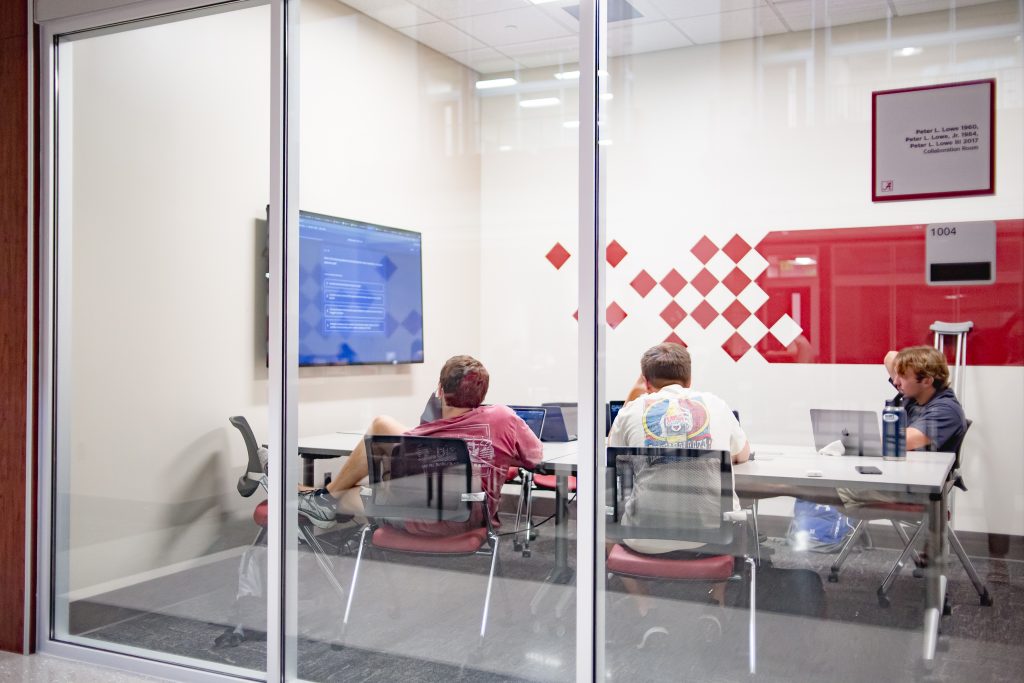
qs world university rankings
for Fall 2022
2022-2027 strategic plan
Updated at the end of 2021, the Culverhouse College of Business strategic plan outlines the College’s major goals, specific objectives, strategies for achieving those objectives, and specific annual plans.
Provide transformational learning experiences both in and outside the classroom.
Adapt and innovate curriculum, educational opportunities, and programs based on College strengths and the needs of a dynamic marketplace.
Develop and maintain distinctive academic programs that attract students and for which Culverhouse is nationally known.
Expand students’ involvement with signature immersive learning opportunities.
Develop and implement a comprehensive executive education program that provides opportunities for lifelong learning and a platform for co-creating and sharing learning with all stakeholders.
Expand accessibility of graduate programs.
Evaluate doctoral education college-wide and identify/implement changes that will strengthen programs.
Provide an inclusive and supportive collegiate experience that enables students to achieve their fullest potential.
Increase undergraduate and graduate student enrollment while shifting the incoming student demographic breakdown closer to that of the state.
Improve the rates of student retention, persistence, and graduation by focusing on high-impact practices and increasing the personal connection to our students.
Create a student-centered hub that provides comprehensive, individualized support and professional development for all Culverhouse students.
Enhance impact and
visibility of our thought leadership, discovery, and knowledge creation.
Build on current capabilities across the College and embrace impactful research and scholarship.
Provide infrastructure, funding, and developmental support that strengthens and grows the research capabilities and programs to meet the critical needs of the key constituents.
Foster research capabilities among undergraduate and graduate students.
Showcase Culverhouse’s research capabilities and impact.
Cultivate an inclusive community where respect for individual contributions is a core value, enacted by all.
Recruit, retain, develop, and reward outstanding faculty, staff, and administrators to work with current and future generations of Culverhouse students.
Elevate diversity and inclusion as cultural values of the Culverhouse College of Business.
Develop effective channels to ensure an engaging and open working environment while encouraging continued growth and celebrating the accomplishments of faculty, staff, and students.
Leverage outreach and external relations activities to positively impact individuals, communities,
and business.
Establish new and strengthen existing relationships with external constituents that help Culverhouse meet its mission and support our values.
Strengthen existing relationships with alumni and increase the number of alumni who are actively engaged with the College.
Enhance presence of Culverhouse as a top business school and solidify our reputation through marketing and communication efforts.
Increase involvement in endeavors and partnerships resulting in positive societal impact, especially improving quality of life and economic development in the underserved and Black-Belt regions in Alabama.
Increase the awareness, utilization, and impact of externally-facing College centers.
Grow and manage financial, physical, and virtual (technology) resources to support the College mission and strategic initiatives.
Implement processes and tools to increase efficient use of resources.
Increase financial resources.
Prepare contingency plans for any potential disruptions to College operations and resources.
measures for success
rankings and academics
Continuous upward movement in undergraduate and MBA rankings
Undergraduate: Top 25 public
business schools
MBA: Top 20 public MBA programs
Recognized Centers of Excellence
student growth
Increased undergraduate & graduate enrollments
Increased graduation & retention rates
Increased placement rates
research
Consistent production of high quality & impactful research
Increased academic publications
Increased external funding proposals and awards
culture
Increased diversity among students, staff & faculty
Increased faculty & staff retention
Increased climate of inclusivity
outreach
Enhanced collaborative partnerships with business & industry
Increased alumni engagement
Focused initiatives impacting society
sustainability
Increased financial resources
Enhanced physical resources
Continuous AACSB accreditation for business and accounting

